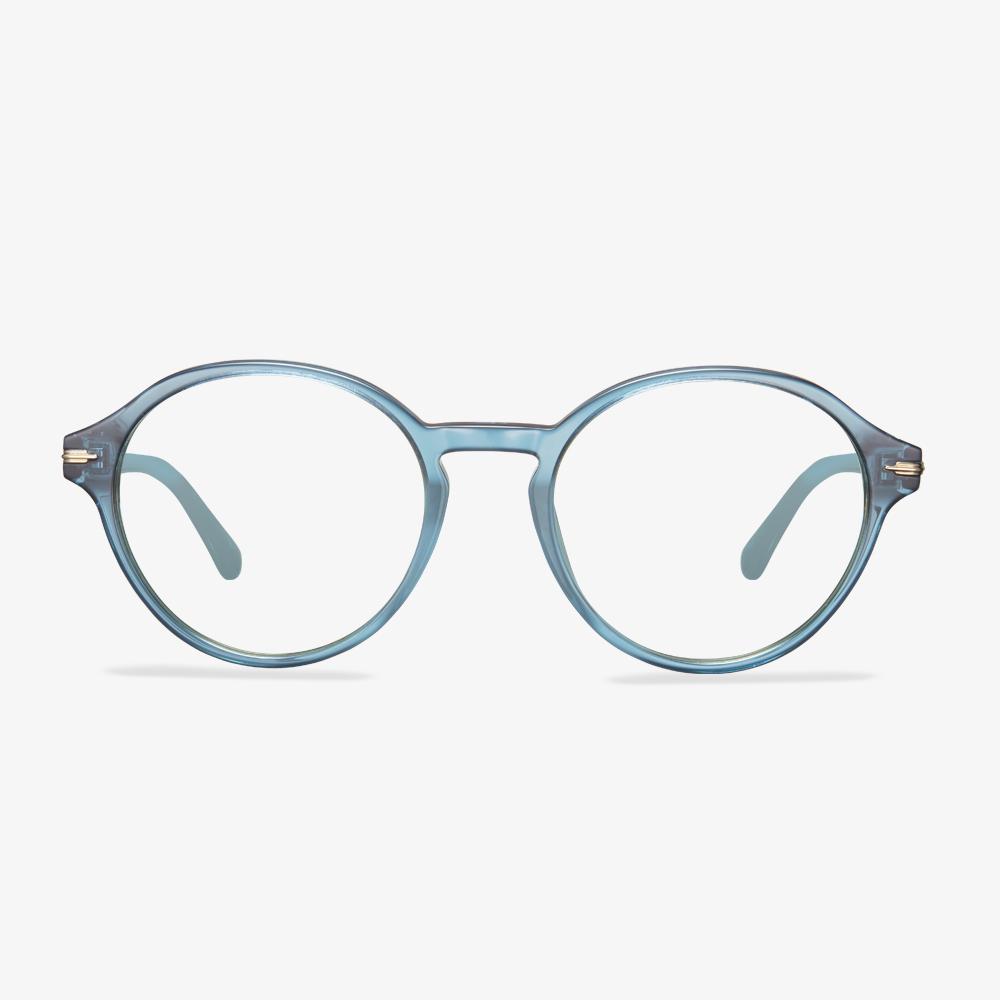EyeBuyDirect Ride
Rimless glasses provide the minimalist option for eyewear who want their glasses to blend in with their face, or want a larger field of vision. These aviator-shaped rimless glasses are very stylish, with the red or blue at the temple tip highlighting the colors. An adjustable nose pad provides a comfortable fit.
Can you wear blue light glasses while driving?
The damage of blue light has a cumulative effect. The longer the exposure time is, the more serious the damage of retinal cells will be, which will eventually lead to irreversible damage of the structure and function of the retina. Once the retina has permanent damage, degeneration will directly affect the metabolism and function of photoreceptor cells, resulting in vision loss. It depends on the glasses you're wearing. The function of anti-blue light glasses depends on the material of the glasses. Some blue light glasses have a special anti-reflective coating, which can reduce glare. These glasses are definitely helpful when driving at night.
How to know if lens is polarized?
Make use of LCD screens. Point the glasses horizontally at the LCD screen and then rotate them upward by 45 degrees clockwise. If it is a polarized lens, it will show a change in color deepening. If it does not change no matter how you rotate it, it is not a polarized lens. You can borrow another person's polarized lens or have previously worn a known true polarizer, and place it crossover with the new glasses you want to buy. At this time, you should see the object clearly from the crossover part with your eyes. Then cross the glasses vertically and horizontally, and at this point, the opposite object should not be visible from the intersection. If this condition is satisfied, it means that a true polarized lens is being tested.
How to choose blue light blocking glasses?
Nowadays, electronic products such as mobile phones and computers have become indispensable tools in our lives. While these high-tech products bring us convenience and fun, they also bring symptoms such as eye fatigue and myopia. Subsequently, blue light blocking glasses have also received everyone's attention. Anti-blue glasses are only suitable for people who use electronic products for a long time, not for people who are visually fatigued. Exposure to such unnaturally strong blue light for a long time every day, especially for teenagers and children, needs to pay more attention to the prevention of blue light. So, how to choose suitable blue light blocking glasses for kids?
Anti-blue light is necessary, but not all blue light can be filtered out, because blue light will interfere with the body's melatonin secretion after being over-filtered, thereby affecting sleep. Therefore, when choosing blue light blocking glasses, you should choose appropriately according to your own eyes.
For how to choose anti-blue glasses, consumers can distinguish from the color of the lenses. Generally speaking, a lens with a yellow color will have the effect of blocking blue light. But too dark lenses will affect the contrast sensitivity. Therefore, it is recommended that consumers choose moderately. In addition, consumers should also pay attention to whether the glasses products (lenses, frames) have conformity marks, etc. It is best to choose professional and well-known glasses shops to match glasses.
Blue light blocking glasses lenses and common glasses lenses have different colors.
The real blue-light-blocking glasses should be yellow. Based on the primary principles of optics, the light reflected from the lens is the light that resists the same color as it. As the name indicates, blue light is to prevent the reflection of blue light. Remove blue light, and all the red, yellow, blue, and green in visible light is yellow.
Polarized vs non-polarized sunglasses
-
Non-polarized sunglasses generally only have the two basic functions of shielding strong light and filtering ultraviolet rays, and their efficiency in filtering ultraviolet rays is low. In our daily life, in addition to strong light and ultraviolet light, when light passes through uneven roads, water surfaces, and other places, irregular diffuse reflection light will be generated, which will cause blurred vision and fatigue in the eyes.
-
Polarized sunglasses can filter out this kind of light, only absorb the reflected light of the object itself, truly present what you see, make the field of vision clearer, and reduce visual fatigue. In addition, polarized sunglasses have a 99% blocking rate of ultraviolet rays due to their high-efficiency filter layer, which can effectively reduce the damage of ultraviolet rays to the eyes.
-
When judging whether the sunglasses are polarized lenses, you can rotate the sunglasses up to 45° clockwise. If the color of the lens changes at this time, and the color of the sunglasses returns to normal after turning the sunglasses back to the original position, then it can be judged that the sunglasses are polarized. And if you can’t see the change in the color of the sunglasses lens no matter how you turn it, then you can judge that the sunglasses are not polarized.
Contact Lens Material - Hydrogels
The raw material of the hydrogel is called HEMA. HEMA is hydrophilic and has a water content of 38% by itself. By cross-linking with other polymers, the water content can be up to 80%. The world's first soft cloaking material (OttoWichterle, 1961) was made from HEMA, called PHEMA. Nowadays, most conventional hydrogels are made up of the copolymer of PHEMA and other monomers.











































